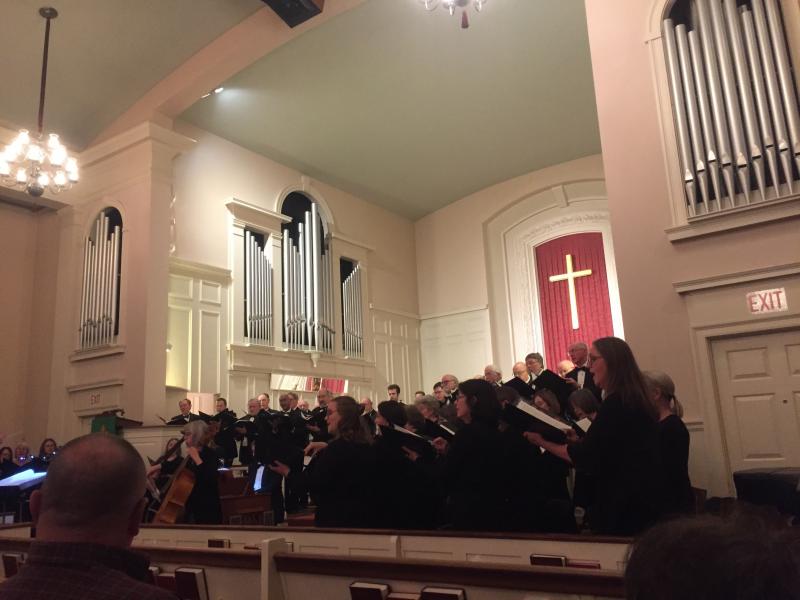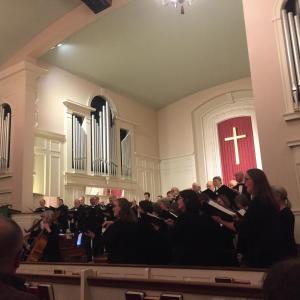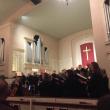Oratorio Chorale: Monteverdi Vespers of 1610
The Oratorio Chorale, now in its 45th season, began with music from more than 400 years ago – Monteverdi’s Vespers of 1610, which is dedicated to the Virgin Mary, and includes the Song of Mary, also known as the Magnificat. The work was performed at Woodford’s Congregational Church in Portland, and at St. John’s in Brunswick on Saturday and Sunday.
Monteverdi lived at the cusp of the polyphonal Renaissance and the earliest stirrings of the Baroque, which used the polyphony of the earlier form to establish improbable and sublime harmonies. Because this is a sacred work, much of the piece is done in an even earlier form, plainsong chant, such as would have been sung by monks and nuns throughout Europe.
Monteverdi is well known for his secular work, such as the opera L’Orfeo; themes from L’Orfeo find themselves in this work, which dates only three years after he composed the opera. Monteverdi also composed many madrigals and other secular Renaissance forms for his patron, the Duke of Mantua. Although Monteverdi was a seasoned professional, both this Vespers and his earlier opera are still part of his very early work. In later years, Monteverdi went on to Venice, where he composed many other works, including operas, masses, Requiem masses for such grand personages as Cosimo II de Medici of Florence, and a dramatic musical piece for the wedding of Catherine de Medici and King Ferdinand.
Vespers is a church service held in the early evening, at sundown, similar to an Anglican evensong. There is no communion service, but on high holy days, the service might include incense. In Monteverdi’s Vespers, the piece includes not only a choir – sometimes broken into as many as 10 parts – but a Renaissance orchestra as well, consisting of wood cornetti, recorder, lute, brass, and stringed instruments. The instruments in this performance were close to what would have been used during Monteverdi’s time.
A deep, lavish and, at the same time, simple work, based on plainsong chant in the vocal parts with a Baroque basso continuo in the instrumental part, the piece was deeply moving. This reporter has been reviewing the work of the Oratorio Chorale for more than 15 years, and would have to say that this concert represented the best of the Oratorio Chorale.
The soloists were supremely gifted; the period musicians were excellent; the choir was in the best form I have ever heard them.
As director Emily Isaacson moves out of her comfort zone into more and more challenging work, it is gratifying to watch her chorale move with her joyfully and masterfully. She trusts them to perform under pressure, and they never seem to falter.
However, she has a particular gift for the Renaissance and early Baroque; one hopes that this aspect of their work together will be explored more and more in the years to come.
Event Date
Address
United States
























